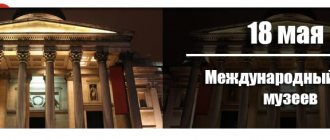Holiday traditions
Traditionally, on April 29, a famous representative of the dance world addresses the public with a message about the meaning and beauty of dance. In 1984, the Soviet choreographer Yuri Grigorovich performed, in 1996 - the Russian ballerina Maya Plisetskaya.
Dance festivals and competitions take place on this day. Dance schools hold open days. Flash mobs are organized. Dance evenings are organized.
In Russia, on International Dance Day, choreographers, conductors, composers and artists are awarded the professional ballet award “Soul of Dance”.
Films about dance
If you want to get into the dance mood, use the films from our selection.
- "Dirty Dancing", 1987.
- "Coyote Ugly Bar", 2000,
- "Billy Elliot", 2000.
- "Moulin Rouge", 2001.
- “The last dance is for me”, 2001.
- "Chicago", 2002.
- "Let's Dance", 2004.
- "Step forward", 2006.
- "Keep the Rhythm", 2006.
- "Ballet Shoes", 2007.
- "Another Cinderella Story", 2008.
- "Street dancing", 2010.
- "Burlesque", 2010.
- "Black Swan", 2010.
- "Sweet Frances", 2012.
Toasts
“Congratulations on International Dance Day! I wish you an amazing sense of rhythm, incredible plasticity, endurance, enthusiasm and faith in your abilities. Good health, self-discovery in new directions, enchanting choreography and thunderous applause. Let your talent shine brightly on the international stage!
“Happy International Dance Day to everyone who can’t stay still when they hear music! Dance is an encrypted language of movements, it is speed and whirlwinds of emotions. Dance is more than words. Dance, open up in dance, and discover other people. Let the fiery dance of your life never stop!
“We wish all dancers that the goddess of dance will visit you today and give you the desire to flourish professionally! Happy Dance Day, dear dancers! Let your gait be airy and weightless, let your figure be slim and graceful! We wish you to plunge into the passionate embrace of dance and spin a dizzying romance with it for life! New energy for you, inspiration, vigor, rhythm! Let the heart in your chest beat in time with the melody of your soul! Let dancing always be a desired and favorite activity for your soul and body! We wish you that each of your dances ends with a stormy burst of applause from fans of your work!
Why is World Dance Day celebrated on April 29?
The date itself was proposed by the famous teacher and choreographer Pyotr Gusev in memory of the French choreographer, theorist and ballet reformer Jean-Georges Noverre (1727-1810), born on this day, who went down in history as the “father of modern ballet”.
The man of the era takes off his mask
What did Noverre do so great for dance that his name, the only one of the few names in the history of ballet, is so revered by descendants? And his birthday is declared Dance Day? Even the era in which Noverre lived in ballet history will be called that - the era of Noverre... It’s very simple: he reformed this dance. Moreover, he reformed not just dance, but everything connected with it. Because no matter what important event we have to remember in the history of dance, almost all of them will be connected with Noverre’s reforms. Even the right of dance to independence from other theatrical arts is also connected with it. After all, before Noverre, a ballet performance was often part of some opera or dramatic performance and was simply one of its acts. Noverre changed this subordinate position of ballet in the most decisive way.
Other innovations that entered the practice of theater from the middle of the 18th century are also connected with it. For example, decorations. In the 17th and 18th centuries, the theater stage resembled a luxurious, intricate picture, where parks, palaces, and city squares were enclosed in the rich frame of the portal. What artists didn’t come up with to attract the public. And as soon as ballet became an independent art form, such “embellishment”, especially in the performances of Noverre himself, was finished. The artistic design had to accurately reflect the era and location of the play and make room for dance.
Or theatrical makeup... Before Noverre, dancers were known to wear theatrical masks. They were worn by the Sun King himself, Louis XIV, when he danced in his ballets, and by professional dancers until the mid-18th century. And it was Noverre who decisively demanded that they be abandoned in his performances, arguing that “the face is the mirror of the soul,” and to make its expression easier to see for those sitting in the audience, makeup began to be used in the theater. It is believed that the first ballet actor to abandon the mask was Vestris the Father: his appearance on stage with his face uncovered “almost created a commotion in the stalls” of the Paris Opera.
This ballet reformer formulated his thoughts in a special book, which is still a catechism for ballet dancers, and in ballet schools future ballet dancers carefully study and take notes. In 1760, in Lyon and Stuttgart, this book was first published under the title “Letters on dance and ballets” (“Lettres sur la danse et les ballets”). Having actually revolutionized the ballet theater, this work brought Noverre European fame. In it, the reformer of ballet art tried to comprehend all previous ballet experience. The main expressive means of Noverre's ballets was pantomime; it was subordinated to dance, which, moreover, should contain a dramatic idea. In “Letters on Dance and Ballet,” he developed the theoretical problems of pantomime and introduced a new ballet term pas d’action, that is, “effective ballet.”
This large theoretical work subsequently went through many reprints and was translated into all major European languages. And in 1803-1804. This work was published in 4 volumes in St. Petersburg under the title “Letters on Dance” - the book was published in Russia thanks to Noverre’s student, Charles Le Pic, who was invited to St. Petersburg in 1787 as the first dancer and then choreographer. Since then, the book has been republished in Russia until the present time.
Theater massacre in London
So, on April 29, 1727, that is, almost three centuries ago, Jean-Georges Noverre was born near Paris. His biography is not entirely usual for a dancer and choreographer of that time, because he did not come from an acting family at all, and, accordingly, the profession of a dancer was not passed on to him by inheritance, which was quite common in those days. His father Jean-Louis Noverre, a native of Lausanne, was an adjutant in the army of the warlike Swedish king Charles XII, the same one who lost the battle of Poltava to Peter I. So the boy had a wonderful military career ahead of him, if he had not preferred theater and dancing to military service. And such behavior of the scion of a good family went far beyond the boundaries of generally accepted norms of life in the mid-18th century.
Noverre studied with famous teachers: Jean-Denis and Louis Dupre, as well as with the then elderly dance master Marcel. Dupre offered the 16-year-old student his first engagement as a dancer at the Opera Comic Theater, because at that time he was unable to get into the Paris Opera, the main ballet theater in the world. After Paris there were Berlin and Marseille, where Noverre was a partner of the famous ballerina Camargo, who went down in the annals of history for being the first dancer to shorten the hem of her ballet skirt to the very calf, exposing her beautiful legs. With them, the dancer performed entrechat and cabriole, which before her only male virtuosos could perform. Let us not forget that until the end of the 18th century, the owner of the stage in ballet, and in the theater in general, remained the actor or dancer. In 1751-1752, Noverre himself led a troupe of dancers at the Marseille theater, which included his wife, née Marie-Louise Sauveur, who soon, however, left the dance field for the role of a comedienne.
Repeated attempts to get into the first theater in France - the Royal Academy of Music or the Grand Paris Opera (as it would be called later) were still unsuccessful. But in 1754, the 27-year-old choreographer showed the Parisians his ballet “Chinese Festival,” which, in fact, made his name. “The Chinese Holiday” brought Noverre such fame that even England became interested in ballet. The greatest tragic actor of the 18th century, David Garrick, invited Noverre to stage this ballet at the Drury Lane Theater in 1754. Noverre went to stage the play in London, not quite, however, calculating the political situation that had developed by that time - the Seven Years' War between England and France was about to begin.
Apparently anticipating the anti-French sentiment of the public that had reigned in English society before the start of the war, Garrick made a clever move: he secured the presence of King George II at the premiere and informed the public that Noverre, in general, was not a Frenchman at all, but a native of Switzerland, his wife she is German, and out of the 60 actors who take part in the ballet, 40 are English. The first time it worked, and despite the fact that the premiere took place in a tense atmosphere and ended with cries of protest, the performance was supported by the nobility. But already at the second showing of the play in Drury Lane, a real battle broke out. Right during the action, a fight broke out in the hall, and swords were used. The armed nobles still managed to stop the pogrom, defeating their opponents and inflicting a lot of injuries on them. However, at the fourth performance, when the elite went to the opening of the Italian opera season, the gallery, blinded by hatred of everything French, smashed chandeliers and mirrors and threw benches into the stalls. The ballet had to be cancelled.
But the stubborn Noverre was in no hurry to leave England. After all, communication with Garrick forced the choreographer to reconsider his views on ballet in many ways. According to the outstanding ballet researcher V.M. Krasovskaya “Garrick rediscovered Shakespeare for the English, reworking, however, his plays in the conventional rules of his own era. Garrick's work became the pinnacle to which Noverre has since strived, sometimes neglecting the limitations of his own art. Conversations with Garrick about the goals and objectives of modern theater influenced him.” Garrick also appreciated Noverre and, at the end of his own stage activity, in a letter to a friend, he regretted that he was forced to “talk about Noverre in simple and boring prose” and called him “the most fantastic of dancers and a great Genius.”
The audience cries and faints during scenes of child murder
In 1757, Noverre returned to France and headed the ballet troupe in Lyon, which was then one of the leading musical and choreographic centers in France. The Paris Opera preserved traditions and resisted new trends - but in the provinces experiments were possible. There Noverre’s first innovative “effective ballets” were born, in which he completely abandoned heavy costumes, developed the dramatic basis of the performances, “and even encroached on the symmetry of corps de ballet dances, which originated from the court balls of Louis XIV.”
Jean-Georges Noverre Photo: en.wikipedia.org
Of course, like any choreographer, Noverre dreamed of staging his ballets at the Paris Opera - Royal Academy of Music. But the citadel of traditionalism did not want to see within its walls a talented choreographer full of daring reform ideas. In order to realize his plans, translate theories into practice and show Europe which path to take, Noverre went to Stuttgart and worked there for seven years.
In Stuttgart, Duke Charles II of Württemberg, a great connoisseur and theater lover, created a free creative environment for arts workers, which attracted many talented musicians, artists, and painters to him. In 1763, for the Duke’s birthday, Noverre staged a ballet “Medea and Jason” to the music of J. Rodolphe, where he embodied his main ballet reforms. The performance lasted only about half an hour and consisted of three parts. In the pre-revolutionary years, plots with bloody murders and all sorts of horrors became very fashionable in literature and theater. Therefore, the choice of the ancient Greek myth to which Noverre turned was far from accidental.
The passionate and dynamic performance made such an impression that the audience cried. And in especially tragic moments - in the scenes of Medea’s murder of her children, impressionable spectators simply fainted. Medea was played by Nancy Levier, and the role of Jason was played by the premier of the Paris Opera, the most famous artist of that time, the “God of Dance” (a modest man, as he initially called himself, and after him his contemporaries) of the 18th century Gaetano Vestris. Following him, many artists from the Paris Opera, such as Jean Dauberval, came to Stuttgart to dance in Noverre's productions.
Having made a revolution in choreography, Medea and Jason became the brightest and most famous ballet of the decade and was such a great success that the gradual adoption of Noverre’s reforms began in Europe. All self-respecting theaters, young and old, aspired to have it in their repertoire. The ballet was also performed in Russia, where they liked to import all the most fashionable and advanced things from abroad. On the St. Petersburg stage in 1789, it was shown by Noverre’s student, participant in the first premiere, Charles Le Pic. The ballet was so popular that in the staged version by Giuseppe Solomoni in the 1790s, it was danced by serf actors of the richest Count Sheremetyev.
By 1764 Noverre was directing a company in Stuttgart of fifteen soloists and a corps de ballet of twenty-three men and twenty-one women. Now a European celebrity, he was still waiting for an invitation from the Paris Opera, which still ignored the choreographer. Without waiting for a contract with Paris, the choreographer moved to Vienna, where he signed an engagement as a choreographer for two Viennese theaters and a dance teacher in the imperial family, where the young princess of the Habsburg dynasty, Marie Antoinette, the future queen of France, became his student. The princess was taught music by Christophe Gluck. He included ballet divertissements in his operas, which were often staged by Noverre. But the little princess, having become the Queen of France, will fulfill Noverre’s long-standing dream of getting the coveted position of chief choreographer of the Paris Opera.
Schemers at the Paris Opera force Noverre to leave Paris
And then, in the early autumn of 1776, rumors spread in Paris: Noverre was engaged to the Royal Academy of Music. The magazine Secret Memoirs announced on August 14 that the theater would soon receive “reinforcements, which may prove very useful, in the person of the famous Noverre. He was going to Paris as a famous and already venerable choreographer. He was about fifty, full of energy and hoping to conquer a city that had not recognized his merits for so long. But the triumph was short-lived. The aristocrats and the artists they patronized immediately began a war against him.
The newspapers maligned his appointment: “... a golden bridge was built for him to convince him to leave Vienna. They agreed to give him a salary of 20 thousand livres, and this is, without a doubt, too much.” A letter was circulating from hand to hand from the mother of Gardel, a dancer at the Paris Opera, who also applied for the coveted position, in which she was indignant: “a son who has achieved fame and praise for his talent during the 19 years that he spent in the opera must give way to a foreigner, twenty times in vain trying to impose himself on the Opera... Little Noverre has too much ambition and complacency.”
The premiere of the five-act ballet based on Carnelle’s tragedy “Horace and Curiatia”, which was shown soon, failed. The artists refused to participate in the performance. Journalists laughed in reviews that his ballets cannot be understood without a book with a libretto, that the public is disappointed and wants the usual lyrical and pastoral ones instead of his heroic plots. The management refused him money for productions, the artists put forward more and more new conditions for their cooperation with the choreographer. Since 1778, Noverre staged only dances in operas at the Royal Academy of Music. And although the one-act ballet “Trinkets” to the music of V.A. was a success. Mozart and the revival of Medea and Jason, the intrigues around Noverre actually drove him into a corner. After holding out for 5 years in 1781, the humiliated, misunderstood and insulted Noverre, in exchange for a large lifelong pension promised to him, was forced to leave. He left Paris.
“I left my homeland with the decision never to use my abilities here again,” wrote the choreographer. He left for England. The season opened on November 17, 1781 with the master’s new ballet “The Newly United Lovers.” There were also revived productions. Here again, critics praised Noverre’s “power of genius,” his “high taste” and ability to combine “the qualities of a poet, artist and actor.” To complete the success of the London season, the British published translations of the Letters on Dance. And then Noverr fell ill. And only in the spring of 1887 he resumed his activities. In the fall, he brought a selected troupe to England, which included the young Charles Didelot. Many years later he was to become the founder of the Russian ballet school.
Plot to save Marie Antoinette
The year 1789 came - France was on the verge of revolution, and after the fire of the Royal Theater in London, where the performances took place, the choreographer returned to his homeland. He settled in the provincial town of Triele, where he lived for three years. In 1792, when the Jacobins came to power, a threat loomed over the head of sixty-five-year-old Noverre. Fearing persecution, Noverre hastily leaves for England with a group of dancers. There are legends that before leaving the country, Noverre takes part in a conspiracy and makes an attempt to save his queen, the one who appointed him to the post of chief choreographer of the Paris Opera... In one of her books dedicated to the history of ballet, researcher Irina Deshkova writes: “From -a large sum of money is secretly transferred abroad through him to bribe jailers. However, after several previous attempts to free Marie Antoinette, which ended in failure, no new brave souls were found.” The Queen ascended the scaffold. And although Noverre, who fled to England, “was informed that he had been issued a republican passport, that France did not consider him a refugee, and even that the new authorities were going to compensate for the losses he had suffered, bearing in mind his greatest services to the fatherland, Noverre remained true to himself. As if in response to this, he staged a choreographic miniature in London to the music of the English anthem, beginning with the words: “God Save the King”...
Returning to France, Noverre was faced with deception: the promises and promises of the new authorities turned out to be a farce, Peter stopped paying him, blaming him for “connections with figures of the old regime,” and the funds of the Paris Opera became scarce during the revolution. It was impossible to find a job. Only in 1800 did Noverre seek assistance and leave with his wife for the town of Saint-Germain en Le, occasionally visiting Paris and going to the Opera. “He drops by at rehearsals, where he gives advice to young performers, complaining that they are not training more dancers, which is why their numbers outnumber female dancers. He is upset by the deadening monotony that sneaks into the performances of the Opera, and, above all, by the way Vestris Jr. forgets all principles, wasting his talent on pirouettes.” On October 19, 1810, Noverre died.
What else did his contemporaries remember about Noverre, who naturally had no idea that World Dance Day would be forever associated with his name in the future? Contemporaries spoke of his obstinate and domineering character, which (as it now becomes clear) for choreographers of the 18th century and later times was no exception, but rather the rule. Noverre was demanding and harsh towards artists throughout his creative life. Michael Kelly, director of the Royal Theater in London when Noverre was there, remembers him “as a desperate brawler who sometimes tore and threw so much behind the scenes that, truly, he could pass for a madman who had escaped from the supervision.” But all these are costs of the creative process at any time. The main thing is the choreographer’s indefatigable hard work, his creative passion and demands in his work not only towards the artists, but also towards himself. Noverre also possessed this to the highest degree, otherwise he would not have been able to do for the art of ballet everything that he was actually able to do for it!
Present
Gift Certificate. A gift certificate for a master class in your favorite dance style will be an original and thematic gift.
Workout clothes. Comfortable and stylish clothes or shoes for training will be a practical and useful gift for the holiday.
Portable speakers. Portable speakers that create high-quality and loud sound will allow you to conduct training and rehearsals anywhere. In addition to such a gift, you can present a flash drive with a selection of compositions by your favorite artist.
Portrait. A portrait painted from a photograph will be an original and pleasant surprise for a creative person.
Competitions
Dance on an Ice Floe Couples take part in the competition and are given a piece of whatman paper. Participants lay out whatman paper on the floor and stand on it. Then the music starts and the couples start dancing. The main rule of the competition is not to step outside the paper. Violators are knocked out of the game. During the competition, the music is interrupted several times. During the break, participants must fold the sheet in half. The neatest pair wins.
Different styles Before the competition, it is necessary to prepare forfeits on which various names of dances will be written: tango, hopak, lambada, cancan, rock and roll, etc. Participants in the competition take turns choosing forfeits at random. They are given a few minutes to prepare the dance. Then a well-known rhythmic musical composition is turned on, and all the competitors begin to dance simultaneously. The most creative and charismatic participant wins the competition.
Seated dances Before the competition, chairs are placed in a row on which the participants sit. Rhythmic music turns on and the contestants begin to dance without getting up from their chairs. Victory in the competition goes to the most resourceful and artistic participant.
Art without borders
What is dance and why do people do it? Some people just want to have a slim, flexible figure, while others are ready to make plastic movements their profession. Dance is one of the aspects of a multifaceted art that can unite a wide variety of people. At the same time, their nationality, age and gender do not matter.
Time inexorably changes cities and countries, gives birth to new people and sees off on their last journey all those who have ended their earthly existence. And only art remains unchanged in the eternal passage of days. Books, paintings, music, dances - all this is the main heritage of humanity. Many generations of people, gradually replacing each other, regularly replenish the treasury of world values.
Dance is one of the most sincere forms of self-expression of people. It is a special form of art that constantly connects the past and the present.
Dance performances created tens and even hundreds of years ago continue to delight us with modern performances. It is in dance that the connection between generations is especially noticeable.
Interesting Facts
- December 11 is International Tango Day.
- On April 29, 1991, the International Association of Choreographers founded the annual ballet festival “Benois de la Danse”. The international jury selects the most talented representatives in the categories “best choreographer”, “best ballerina” and “best dancer”. The winners receive a figurine in the form of a dancing couple as a bonus.
- The word “dance” appeared in Russian in the 17th century. Before this, the word “dance” was in use.
- The Dance Museum has been operating in the capital of Sweden, Stockholm, since 1953.
- To make a ballet tutu, you will need 13-16 m of tulle.
- The most famous ballet performance in the world is Swan Lake.
- In Russia, the first ballet performance took place in 1673.
About the dancer's profession
Dancing is an ancient art form that combines rhythmic movements, exciting spectacle, and a range of feelings and emotions. There are several specialties related to dance: dancer, choreographer, set designer, coach, dance therapy specialist, etc.
In most cases, people start dancing from childhood in artistic creative groups. This type of activity requires good physical preparation, a sense of rhythm, diligence, and artistry. For some, dancing develops into a professional activity. In universities they receive education in choreographic areas. Dancers may perform solo or be part of professional troupes or ensembles.
Dancers who are successful tour a lot and have a high level of income. However, their career does not last long. The profession of a dancer is associated with high physical activity and the risk of injury.
Who's celebrating?
Professionals of “pas” and “pirouettes”, people who live by dance and dedicated to its development as a unique art form celebrate Dance Day.
Ballet dancers and choreographers, break dancers and folk dancers, ballroom dance ensembles, theater troupes, oriental dancers and step dancers celebrate this day with demonstration performances once a year. It does not go unnoticed by those who like to move beautifully to the music. Dance Day cannot be complete without concert programs and performances by famous dancers.










